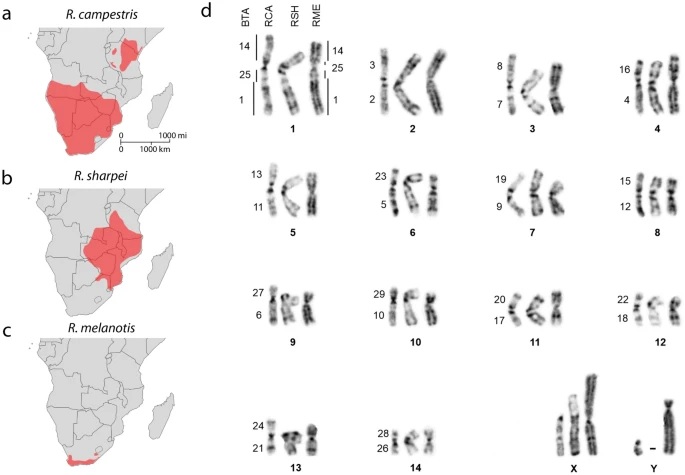
Scientific Reports volume 11, Article number: 3152 (2021)
DOI https://doi.org/10.1038/s41598-021-82859-0
Abstract
Chromosome structural change has long been considered important in the evolution of post-zygotic reproductive isolation. The premise that karyotypic variation can serve as a possible barrier to gene flow is founded on the expectation that heterozygotes for structurally distinct chromosomal forms would be partially sterile (negatively heterotic) or show reduced recombination. We report the outcome of a detailed comparative molecular cytogenetic study of three antelope species, genus Raphicerus, that have undergone a rapid radiation. The species are largely conserved with respect to their euchromatic regions but the X chromosomes, in marked contrast, show distinct patterns of heterochromatic amplification and localization of repeats that have occurred independently in each lineage. We argue a novel hypothesis that postulates that the expansion of heterochromatic blocks in the homogametic sex can, with certain conditions, contribute to post-zygotic isolation. i.e., female hybrid incompatibility, the converse of Haldane’s rule. This is based on the expectation that hybrids incur a selective disadvantage due to impaired meiosis resulting from the meiotic checkpoint network’s surveillance of the asymmetric expansions of heterochromatic blocks in the homogametic sex. Asynapsis of these heterochromatic regions would result in meiotic silencing of unsynapsed chromatin and, if this persists, germline apoptosis and female infertility.
